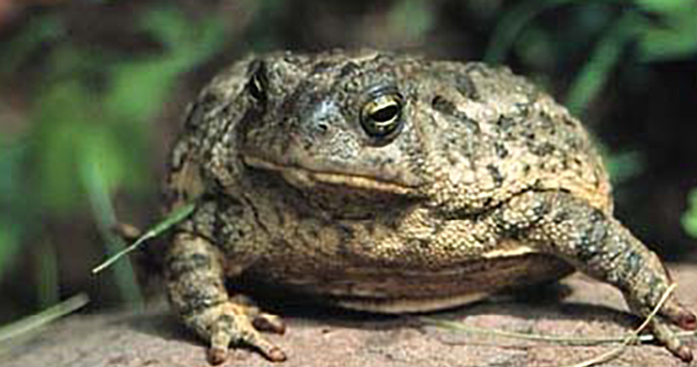Finding a frog in your house can be an unexpected adventure. To locate it, start by quietly observing and listening for any croaking or movement. Check damp areas like bathrooms and basements, and look under furniture or appliances where frogs may hide. Use a flashlight in dimly lit areas, as their eyes may reflect light.
Check potted plants and create a hiding spot with a damp cloth in a quiet corner. Some frogs make chirping sounds, so listen for that as a clue. Be gentle during the search to avoid harming the frog.
How can I effectively observe and listen for a frog in my house?
By staying still and listening attentively, you create an environment that encourages the frog to reveal itself through its natural behaviors.
Stay still and quietly observe
When trying to locate a frog in your house, patience becomes a valuable ally. Find a comfortable spot where you can sit or stand without making much noise. Frogs are often sensitive to vibrations and may become still when they sense movement.
By remaining still, you increase the chances of the frog resuming its activities, allowing you to pinpoint its location. This observational approach is particularly effective in quiet environments where any disturbance can be easily noticed.
Additionally, staying still allows you to better tune into your surroundings. Take note of any subtle sounds or movements that might indicate the presence of the frog. This initial observation sets the foundation for a more targeted and successful search, enhancing your ability to respond to the frog’s natural behaviors.
Listen for distinctive croaking or movement as clues

Frogs are known for their distinctive croaking sounds, which vary among species. While observing, pay close attention to any audible clues that might lead you to the frog’s whereabouts. Frogs often communicate through croaks, and their calls can be distinctive enough to help identify their location within your home.
Additionally, listen for subtle movements. Frogs may create rustling sounds as they hop or navigate through different surfaces. The combination of croaking and movement can provide valuable clues to narrow down the search area. Being attuned to these auditory signals enhances your ability to locate the frog without relying solely on visual cues.
What are common hiding spots for frogs indoors?
The frog’s preference for dark and concealed spaces is key to a thorough search. By methodically inspecting these common hiding spots, you increase the chances of locating the frog and safely facilitating its removal from your home.
Explore damp areas like bathrooms and basements
Frogs are amphibians, thriving in moist environments. Therefore, when searching for a frog in your house, it’s crucial to target damp areas. Start your exploration in bathrooms and basements, as these spaces often provide the ideal conditions for frogs. Check for any signs of water leaks or condensation, as these might attract frogs seeking a humid environment.
In bathrooms, pay attention to corners, under sinks, and around wet towels or bath mats. Frogs may be drawn to these areas not only for the moisture but also for the potential presence of insects, their primary food source.
Basements, being naturally cooler and more humid, are also prime locations. Examine corners, behind stored items, and near any potential water sources to increase the likelihood of locating the frog.
Inspect under furniture and appliances where frogs may seek shelter
Frogs are adept at finding hiding spots, and under furniture or appliances is a common choice. When exploring these areas, approach with caution to avoid startling the frog. Lift or move items gently, focusing on spaces where the frog could easily slip into or hide.
Under sofas, beds, and cabinets are potential hiding spots. Check for any gaps or openings where a small frog could find refuge. Appliances like refrigerators and washing machines should also be inspected, as the warmth they generate can attract frogs seeking a comfortable hiding place. Take note of any signs of droppings or moisture, as these may indicate recent frog activity.
How do you use tools for frog exploration?
The use of a flashlight not only aids in illuminating the frog’s location but also allows you to identify their presence without direct visual contact.
Utilize a flashlight for nighttime exploration:
Nighttime can be an opportune moment to search for frogs, as they are often more active during the darker hours. Equip yourself with a flashlight to enhance visibility in dimly lit areas. Opt for a flashlight with an adjustable beam to focus on specific spots without causing unnecessary disturbance.
When using the flashlight, move slowly and methodically. Sweep the beam across the room, paying attention to corners, crevices, and potential hiding spots. The subdued lighting provided by the flashlight not only aids your vision but also minimizes the chances of startling the frog. This methodical approach allows you to cover more ground efficiently, increasing the likelihood of spotting the frog’s subtle movements.
Look for reflective eyes, a common indicator of frogs
One of the telltale signs of a frog’s presence is the reflection of light in their eyes. Frogs possess a layer of cells in their eyes called the tapetum lucidum, which enhances their night vision by reflecting light. This adaptation makes their eyes appear to glow when exposed to a light source, such as a flashlight.
To spot a frog using this method, focus the flashlight beam at a low angle towards the floor or potential hiding spots. Watch for any gleaming eyes staring back at you. The eyes may range in color from gold to green, depending on the species. Exercise patience and keen observation, as the reflective eyes may be subtle and easily missed if you move too quickly.
What is the proper way to handle and release a frog found in my house?

The handling and release of the frog should be approached with care and consideration for the frog’s welfare.
Gently capture the frog without causing harm
When capturing a frog, it’s crucial to prioritize its well-being and minimize stress. Approach the frog slowly and avoid sudden movements that might startle it. Consider using soft, gentle movements to coax the frog into a suitable container or your hands.
If you choose to use your hands, wet them slightly to ensure you don’t remove the protective layer of mucus on the frog’s skin. Cup your hands gently around the frog, supporting its body without squeezing. Keep in mind that some frogs may attempt to jump, so be prepared to react calmly and prevent any potential harm.
Handling should be kept to a minimum to reduce stress on the frog. If you are uncomfortable or unsure about capturing the frog, consider seeking assistance from someone with experience or contacting local animal control for guidance.
Consider releasing the frog outside, especially if it’s a native species
After capturing the frog, carefully consider its species and whether it is native to your area. If the frog is a native species, releasing it back into its natural habitat is the preferred course of action. Choose a suitable outdoor location, preferably close to a water source, as many frog species require water for breeding.
Release the frog gently onto the ground and allow it to hop away at its own pace. Avoid releasing the frog into an environment where it may face immediate threats, such as heavy traffic or predators. Providing a safe and natural setting for the frog’s release contributes to its overall well-being and increases the likelihood of survival.
If you are uncertain about the frog’s species or its suitability for release, consult local wildlife authorities or experts for guidance. They can provide valuable insights into the ecological impact and proper handling of the frog, ensuring a responsible and compassionate approach to resolving the unexpected encounter.
FAQ’s
What to do if you find a frog?
If you find a frog, approach it calmly, and consider gently capturing and releasing it outside, especially if it’s a native species.
How do I find a lost frog in my room?
Stay quiet, listen for croaking or movement, and systematically check damp areas, furniture, and corners, using tools like a flashlight for better visibility.
How do you scare away frogs?
To scare away frogs, create a less appealing environment by eliminating standing water, reducing insects, and using non-toxic repellents.
Why did I find a frog in my house?
Frogs may enter houses in search of moisture, food, or shelter. Check for entry points and address factors that attract them.
What to do if a frog touches you?
If a frog touches you, wash your hands thoroughly. Most frogs secrete substances that can irritate, and it’s best to avoid contact.
What attracts frogs?
Frogs are attracted to moisture, insects, and suitable hiding spots. Standing water, damp areas, and outdoor lights can draw them in.
Final Words
Finding a frog in your house might be surprising, but with patience and careful observation, you can locate it without causing any harm. Listen for croaking or movement and explore common hiding spots like bathrooms and under furniture. Using tools like a flashlight can be helpful, especially at night, as frogs may be more active.
When handling the frog, do so gently to avoid stress. If it’s a native species, consider releasing it outside in a safe location. Overall, approaching the situation with a calm and humane mindset ensures a successful and kind resolution to your unexpected frog encounter.
